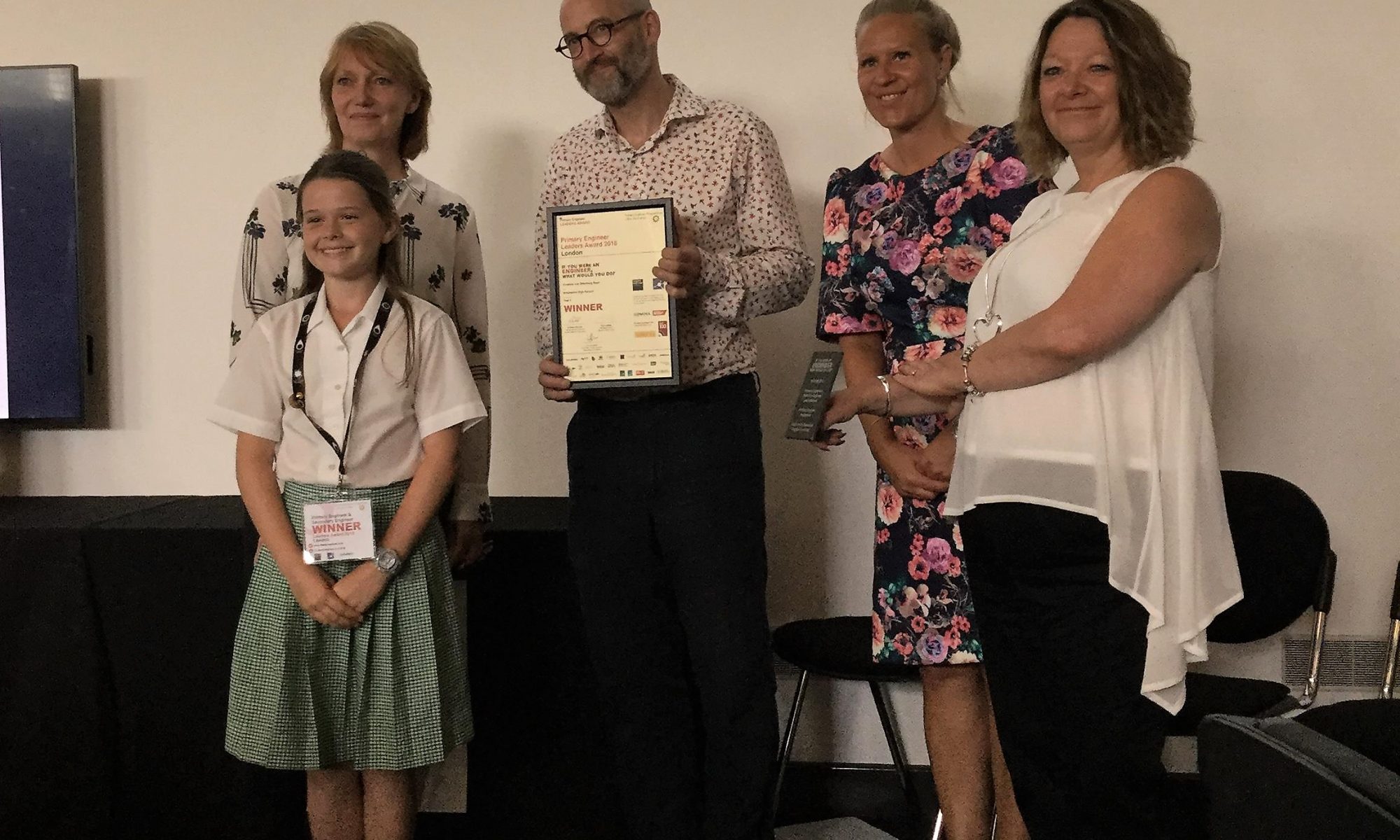Look out for more news about the RRS Sir David Attenborough, a new polar research vessel, which launched in July. Year 5 will be finding out much more about the RRS Sir David Attenborough and it’s R.O.V Boaty Mc Boatface in their Ice Worlds topic this term.
Nanotechnology and its future in medicine
Euripides: a misogynist or a prototype feminist? – 07/09/18
Anna (Year 13) explores the works of Euripides and endeavours to establish whether he was a feminist through analysis of his plays.
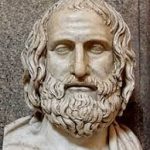 Often regarded as a cornerstone of ancient literary education, Euripides was a tragedian of classical Athens. Along with Aeschylus and Sophocles, he is one of the three ancient Greek tragedians for whom a significant number of plays have survived. Aristotle described him as “the most tragic of poets” – he focused on the inner lives and motives of his characters in a way that was previously unheard of. This was especially true in the sympathy he demonstrated to all victims of society, which included women. Euripides was undoubtedly the first playwright to place women at the centre of many of his works. However, there is much debate as to whether by doing this, Euripides can be considered to be a ‘prototype feminist’, or whether the portrayal of these women in the plays themselves undermines this completely.
Often regarded as a cornerstone of ancient literary education, Euripides was a tragedian of classical Athens. Along with Aeschylus and Sophocles, he is one of the three ancient Greek tragedians for whom a significant number of plays have survived. Aristotle described him as “the most tragic of poets” – he focused on the inner lives and motives of his characters in a way that was previously unheard of. This was especially true in the sympathy he demonstrated to all victims of society, which included women. Euripides was undoubtedly the first playwright to place women at the centre of many of his works. However, there is much debate as to whether by doing this, Euripides can be considered to be a ‘prototype feminist’, or whether the portrayal of these women in the plays themselves undermines this completely.
Let us first consider Medea. The play focuses on the eponymous heroine, and centres around her calculated desire for revenge against her unfaithful husband, Jason, which she achieves by killing his new wife and her own two children, then fleeing to start a new life in Athens.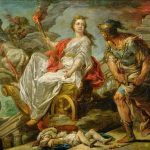 Medea is undoubtedly a strong and powerful figure who refuses to conform to societal expectations, and through her Euripides to an extent sympathetically explores the disadvantages of being a woman in a patriarchal society. Because of this, the text has often been read as proto-feminist by modern readers. In contrast with this, Medea’s barbarian identity, and in particular her filicide, would have greatly antagonised a 5th Century Greek audience, and her savage behaviour caused many to see her as a villain.
Medea is undoubtedly a strong and powerful figure who refuses to conform to societal expectations, and through her Euripides to an extent sympathetically explores the disadvantages of being a woman in a patriarchal society. Because of this, the text has often been read as proto-feminist by modern readers. In contrast with this, Medea’s barbarian identity, and in particular her filicide, would have greatly antagonised a 5th Century Greek audience, and her savage behaviour caused many to see her as a villain.
This negative reception of Euripides’ female characters was echoed in the Greek audience’s response to Euripides’ initial interpretation of the Hippolytus myth, in which Aphrodite causes Phaedra, Hippolytus’ stepmother, to fall in love with her stepson, which has horrific consequences. It is believed that Euripides first treated the myth in a play called ‘Hippolytus Veiled’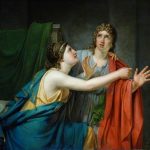 . Although this version is now lost, we know that he portrayed a shamelessly lustful Phaedra who directly propositioned Hippolytus on stage, which was strongly disliked by the Athenian audience. The surviving play, entitled simply ‘Hippolytus’, offers a much more even-handed and psychologically complex treatment of the characters: Phaedra admirably tries to quell her lust at all times. However, it could be argued that any pathos for her is lost when she unjustly condemns Hippolytus by leaving a suicide note stating that he raped her, which she does partly to preserve her own reputation, but also perhaps to take revenge for his earlier insults to her and her sex. It is debatable as to whether Euripides is trying to evoke sympathy for Phaedra and her unfortunate situation, or whether through her revenge she can ultimately be seen as a villain in the play.
. Although this version is now lost, we know that he portrayed a shamelessly lustful Phaedra who directly propositioned Hippolytus on stage, which was strongly disliked by the Athenian audience. The surviving play, entitled simply ‘Hippolytus’, offers a much more even-handed and psychologically complex treatment of the characters: Phaedra admirably tries to quell her lust at all times. However, it could be argued that any pathos for her is lost when she unjustly condemns Hippolytus by leaving a suicide note stating that he raped her, which she does partly to preserve her own reputation, but also perhaps to take revenge for his earlier insults to her and her sex. It is debatable as to whether Euripides is trying to evoke sympathy for Phaedra and her unfortunate situation, or whether through her revenge she can ultimately be seen as a villain in the play.
However, if you look at Hecuba, Andromache, and the Trojan Women, we see how the evils of war have a grave effect on women, and in his play ‘Ion’, he sympathetically portrays Creusa, who was raped by Apollo and forced to cover up the scandal. Although some believe it is difficult to fully label Euripides as a feminist, he nonetheless understood the complexities of female emotion in a new and revolutionary way, whether the audiences, from both then and now, view his female characters as heroines or as villains.
Links and further reading:
https://www.libertarianism.org/columns/ancient-greeces-legacy-liberty-euripides-woes-woman
https://etd.ohiolink.edu/!etd.send_file?accession=ouashonors1428872998&disposition=inline
Primary & Secondary Engineer Leaders Award 2018
Many congratulations to the following students from Wimbledon High who won in their age categories and had the chance to have their ideas on display at Kingston University as part of the Primary Engineer and Secondary Engineer Leaders Award– London Public Exhibition:
- Greta N – Year 5 Winner
- Vivienne O – Year 5 Winner
- Emily F – Judges’ Highly Commended Year 8
- Antonia B –Distinction – Shortlisted Year 8
- Lily O – Judges’ Highly Commended Year 1
- Hope D – Year 1 Winner
Those chosen for display at Kingston University are in the top percentile and as such have achieved an astonishing result as the competition was tough this year over 1,934 entries in London alone and 37,000 nationwide!
Hope, Greta and Vivienne had the chance to attend the awards ceremony at Kingston University on 5th July which was a fantastic way for them to showcase their brilliant ideas and collect their well deserved awards. Congratulations to all involved.
Follow @STEAM_WHS on Twitter for all STEAM department and events updates.
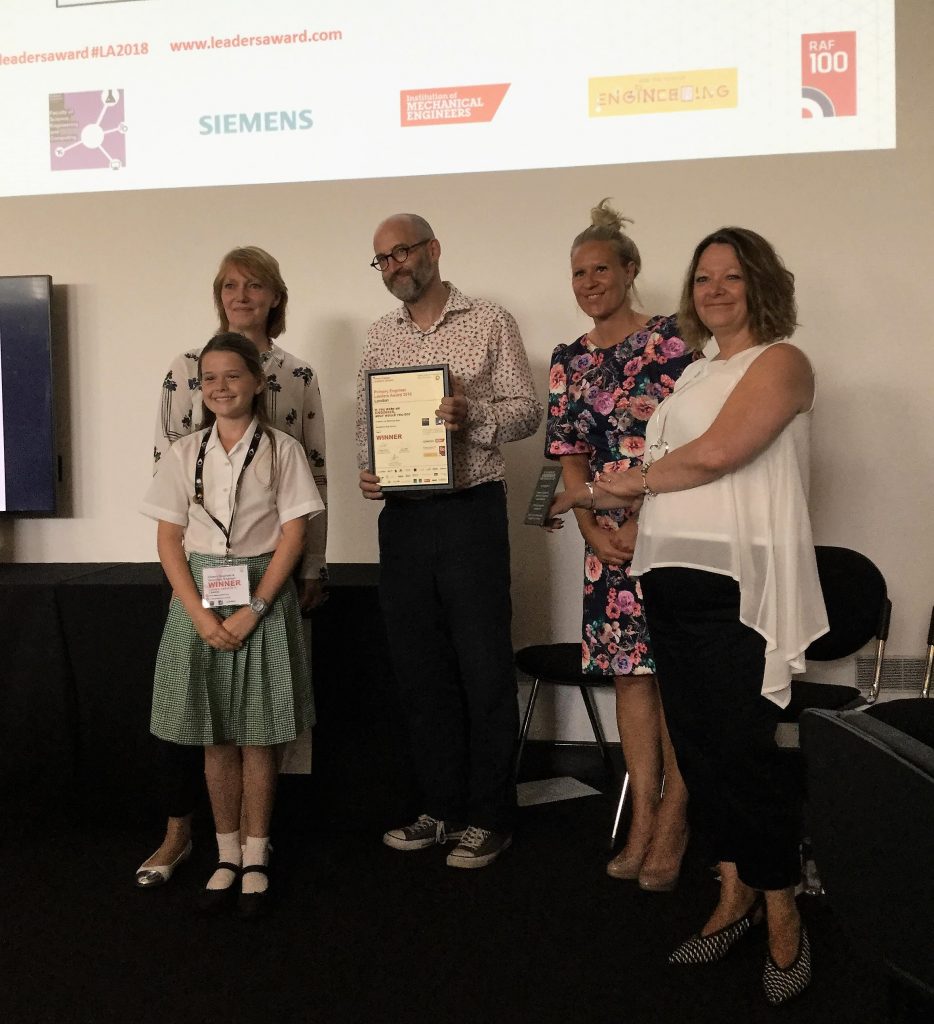
IET Engineering & Technology Photographer of the Year 2018
https://events.theiet.org/photo-competition/index.cfm
Get your fabulous photos in by 28th September!
Printmaking and the Teaching of Art and Design – 06/07/18
Rebecca Owens, Head of Art at Wimbledon High School
Printmaking has always been one of the things I enjoyed the most when I studied at Camberwell School of Art. So, when I started at Wimbledon High School I decided to introduce as many of the techniques as possible. There is something magical about the processes as the results are always a bit unexpected. Rather like a good gardener will learn some strategies to help achieve the results she wants, and tame nature in the garden, she will inevitably have moments of surprise. The same is true of printmaking. Whilst you can learn the techniques and become more familiar with the results, there is often a WOW moment, and an unexpected outcome. As the German Expressionist Ernst Ludwig-Kirchner said:
‘The technical procedures doubtless release energies in the artist that remain unused in the much more lightweight processes of drawing or painting’ (remark on printmaking).
In this article I have outlined why I think printmaking is important, what the different types of printmaking are and how we use printmaking at Wimbledon High School.
Printmaking
Printmaking revolutionised how images were disseminated, with the first publication of books and the subsequent development of printed images in the mid fourteenth century enabling more people to own images, and for these images to be moved around. The letter press or moveable type, first mentioned in 1439, was designed by Johannes Gutenberg. The increased production of books over the next few decades meant that the price of paper dropped, and as a result, that artists had cheaper access to the media. Artists started to work in different ways, with woodcuts, wood engravings or engravings on metal often used to create the printed images found in books. In this respect, printmaking allowed the artist to be more egalitarian, and reach a much wider audience, as each print could be sold for less money than the original.
Why use printmaking in school
The process of printmaking allows students to work and think in a completely different way, as printed outcomes often have unexpected results. This characteristic of the process allows students to experiment liberally with the further development of their images. Indeed, the disconnection between a student’s expected outcome, and the physical reality of their print is part of the pleasure of printing, it liberates the artist and helps them to investigate unexpected and exciting ways of working. Once the screen or block has been created, the student can explore overprinting onto different surfaces, try differing colours schemes or experiment with making the two-dimensional print into a three-dimensional piece. Some students thrive and gain in confidence when they are constrained by some conventions to react against, or rules to break, as David Hockney states “limitations in art have never been a hindrance. I think they are a stimulant”.
There are many advantages to introducing the different skill set required for Printmaking, but one important reason to me is that it allows Art to be rewarding to a greater range of people. The boundaries in the technique encourage creativity.
“Learn the rules like a pro, so you can break them like an artist.”
― Pablo Picasso
Types of printmaking
Drypoint
A drypoint needle is used to scratch into the plate, which may be metal or plastic. Ink is then rubbed into the plate. The paper is dampened before printing, so that as it passes between the two rollers, the ink is lifted out from the scratches.
These prints are based on portrait images that the students took of themselves, their friends and family. The theme was reflections and distortions, where the students explored different reflective surfaces and other ways of distorting their images. The prints were created using an etching needle and a plastic plate. Professionals would use metal plates as they are more durable and so a bigger edition can be created.
 Ruby (Year 10)
Ruby (Year 10)
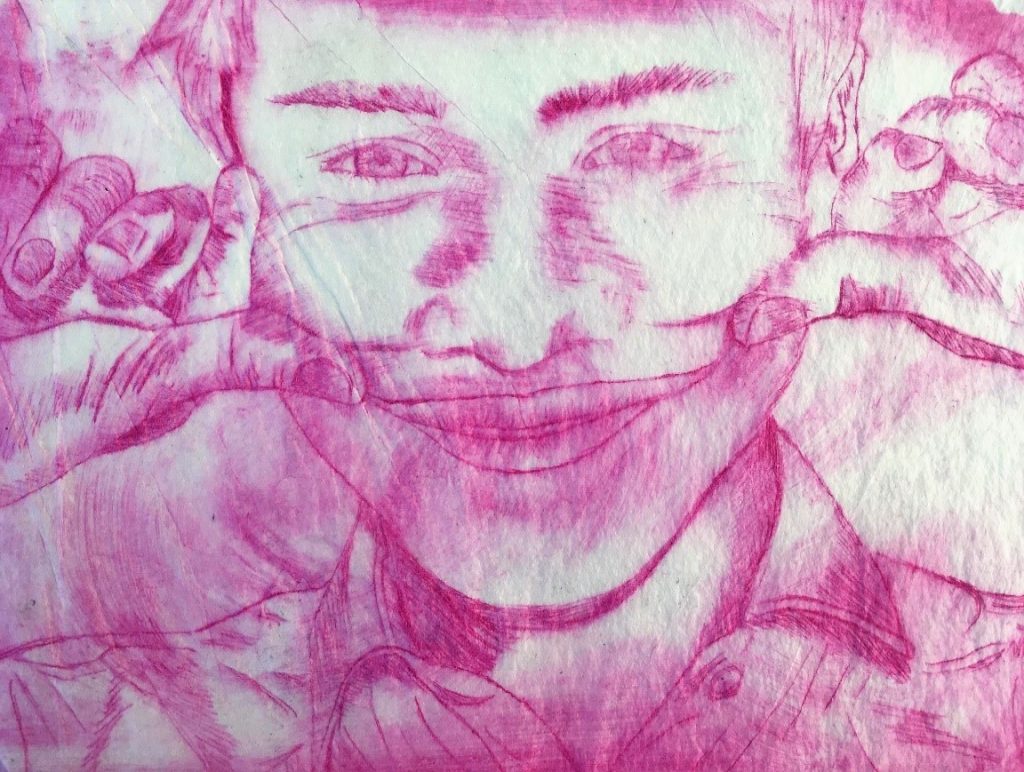 Zara (Year 10)
Zara (Year 10)
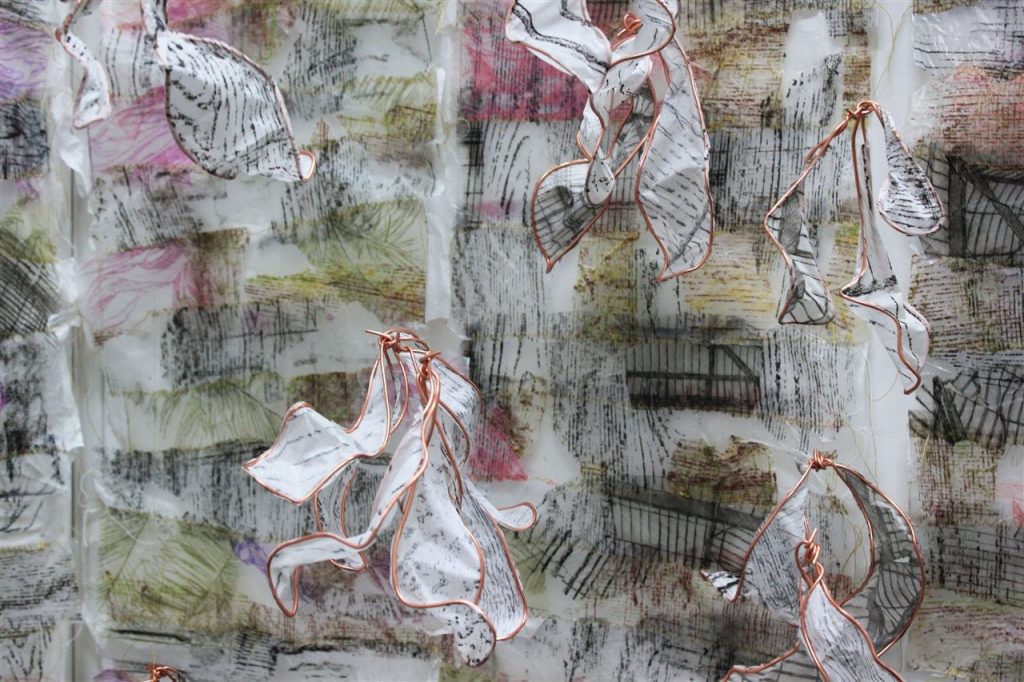 Issie (Year 13)
Issie (Year 13)
Using a combination of etchings, rubbings of textured surfaces Issie created the laminates from which this installation was created. The images explored the contrasting shapes found in Kew gardens.
Etching
Plates are coated with different grounds, and the ground is then removed using the etching needles. The plates are placed in acid, where the acid etches into the metal, creating areas which will hold the ink during the printing process. This process is often combined with aquatint which achieves the graduated tones, as evident in the work of Norman Ackroyd. The artists’ beguiling, monochromatic works of the British Isles achieve a soft, seemingly watercolour-like effect through a combination of etching and aquatint processes. Explore his work here.
Woodcut printing
This technique uses blocks of wood where the grain is parallel to the printing surface. This allows for working on a bigger scale than wood engraving, and as the cuts follow the grain there can be some slipping as the design is cut. The grain of the wood is also evident in the print, with artists like Nash Gill using this characteristic of the process to add texture and interest to their compositions. Ink is applied using rollers and the lines cut remain the colour of the paper. The work of Kathe Kollwitz shows how the simplicity of a print can be used to create images which elicit an emotional response. She used her work to comment on society at the time focussing on poverty and loneliness. See her work here.
Wood engraving
This uses the end grain of wood, often box or lemon wood, as the grain is fine and consistent. As these woods are slow growing, the blocks available are smaller. The cutting process is very hard, requiring sharp tools, but there is less slipping as the tools are cutting across even grain. Ink is applied using rollers and the lines cut remain the colour of the paper. John Lawrence delicate and fine wood engravings have been used as illustrations in numerous fine art publications and books. See his work here.
Lino printing
Using linoleum to create the block. Lino is hessian backed and made from cork. It is easier to cut than wood prints, but has a similar bold effect. The lines cut do not hold the ink as the ink is applied using rollers to the surface of the block. Grayson Perry uses large scale lino prints to create his exciting images which present his critique and commentary on contemporary life. View his work here.
Year 7 Lino prints
Lino prints, akin to wood engravings, require the artist to work in reverse as the areas which are cut away do not hold the ink. Whereas lines are normally drawn in a dark colour on a light background, when working on a lino design it is necessary to reverse that process. For that reason, it is helpful when designing a lino print to make a plan using white chalk on black paper. As an introduction to lino printing Year 7 are shown how to work in this way. It has the additional benefit that white chalk is relatively tricky to create very fine marks with, so it encourages everyone to be bolder. Indeed this is also beneficial as it is difficult to cut out shapes which are too intricate.
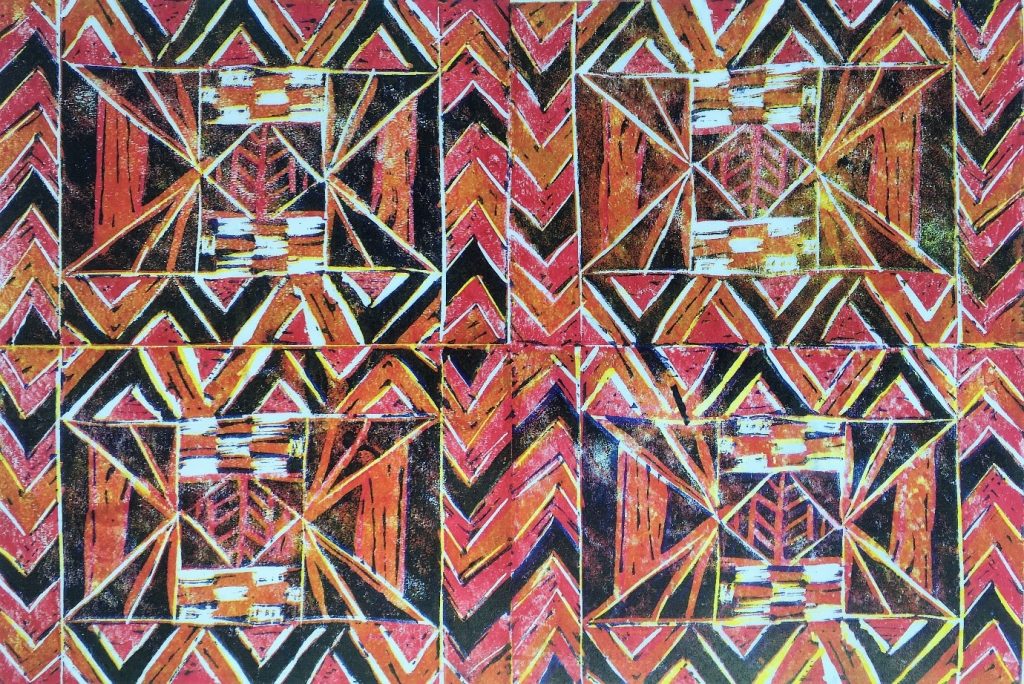 Shanalia (Year 7)
Shanalia (Year 7)
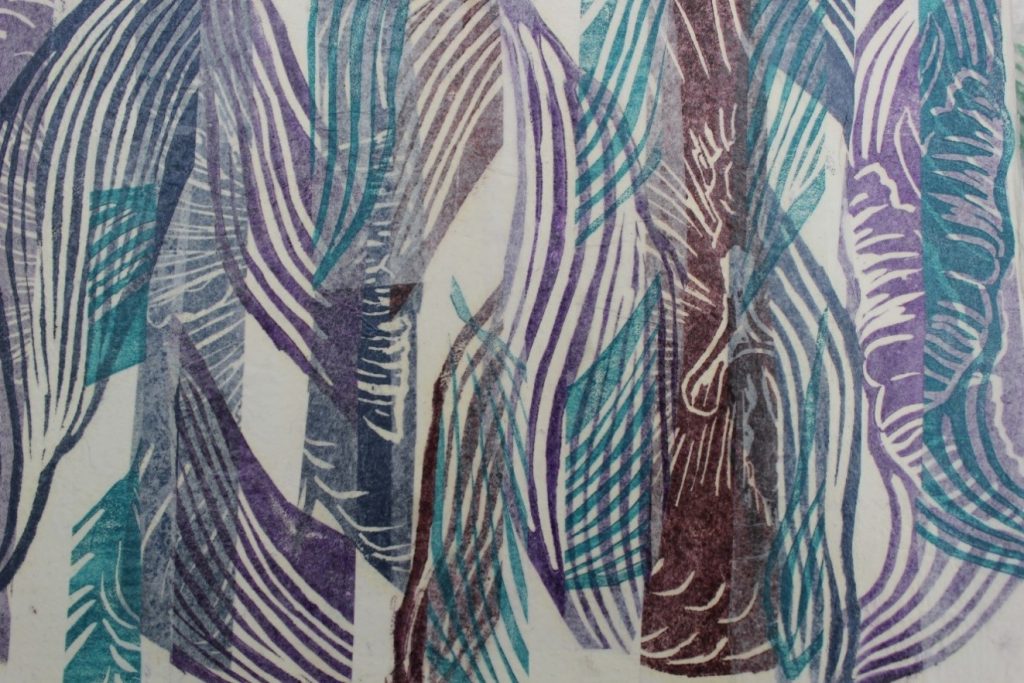
Tulip 1 by Rebecca Owens
I made this piece using Linocut prints on white tissue paper, collaged together. The rhythmic patterns in organic forms have always inspired my work. ‘Tulips 2’ aims to contrast the fluid shapes found in tulip flowers and leaves, with the geometric composition of the collage. I am fascinated by the delicacy and semi-transparent nature of the thin paper. The way the overlaying of the bold Lino prints creates unexpected focal points and a subtle range of colours, is also intriguing.
Monotype printing

Kate (Year 9)
On the theme of Text in the Environment students in Year 9 took some amazing reference photographs from which to develop their ideas. They used these to create their monotype prints. As the name would suggest, these are one off prints, where the ink is rolled out or laid onto a board, paper or other flat surface and a second sheet of paper is laid onto the inked area. By drawing on the back of the paper the ink is transferred. It has the same wonderful sense of excitement and often gives an exciting moment in lessons, when students reveal their prints.

Eryngium – Monotype print by Rebecca Owens
Silk screen printing
Using a silk or synthetic mesh stretched over a screen. The ink is then pressed through the screen using squeegees. Stencils can by created for the screen using papercuts, by photographically transferring images onto the screen using light sensitive materials or by blocking the screen using stoppers. This media was used by artists such as Rauschenberg and Warhol in contrasting ways. Recently Ciara Phillips immersive installations created with prints engaged and intrigued the viewers, through her exploration of the process of printmaking. See her discuss her work here.

Year 11 and 13 mixed media work including prints.
These images demonstrate the exciting ways in which the students have experimented with these techniques.
Ava (created when she was in year 11)
Her screen prints on the theme of natural forms were folded to create this sculpture.
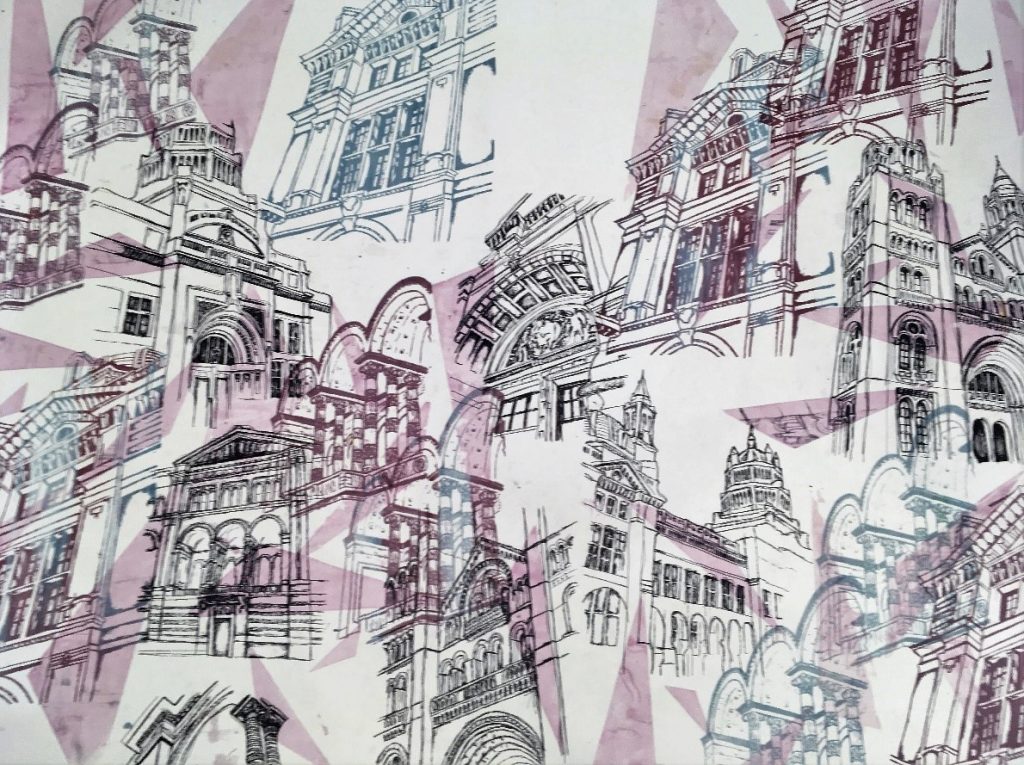
Lucy (Year 11)
In this piece she has combined pen drawing with screen printing.
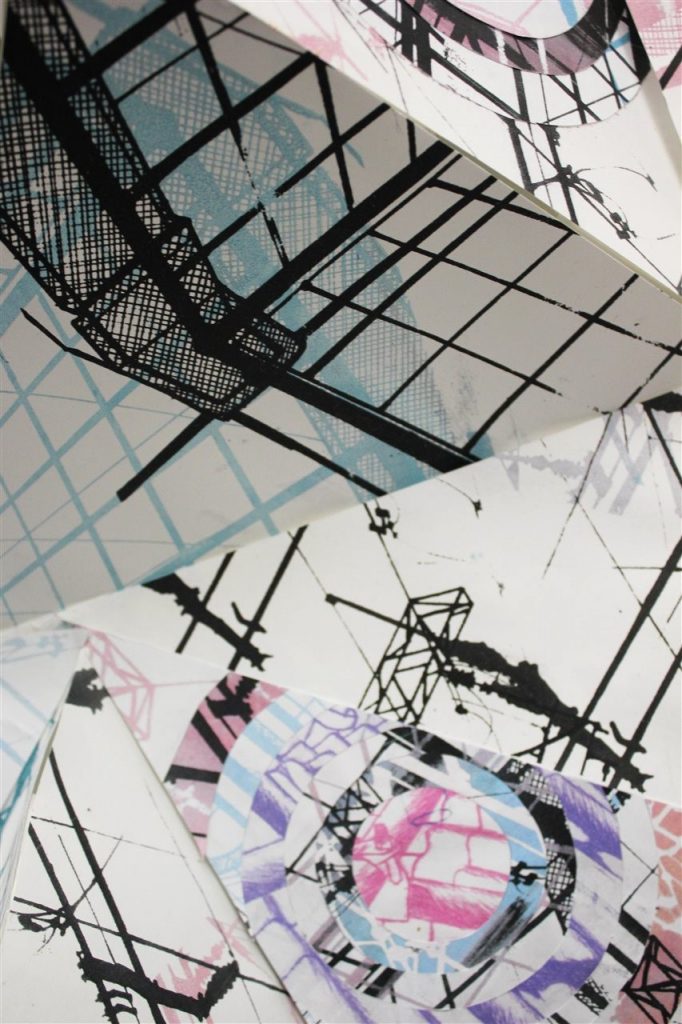
Imogen (Year 13)
This large scale mixed- media piece contains etchings and screen prints which she used to create this sculptural piece.
Lithography
Using a stone or metal plate which has been sensitised to any greasy material, drawing is added using wax or chinagraph pencils. The plate is then brushed with liquid etch and coated with gum Arabic. The second stage of the process sees the black disappearing and leaving a waxy shadow. These will be the areas that hold the ink when printing. With lithography the plate has to be wet before ink is applied and kept damp.
Conclusion
Printmaking allows students flexibility and freedom to experiment. The contemporary artists included earlier in this article use printmaking to tackle important and universal themes through their printmaking. They are evidence that printmaking today is used by artists in increasingly diverse ways, to create artworks relevant to contemporary society.
Creativity allows students to develop different ways of thinking and as Art never has a right or wrong answer, there is a different thought process involved in solving a visual conundrum. Printmaking feeds into student’s visual vocabulary, allowing them the ability to express their ideas in a range of sophisticated ways, and helping them to express their thoughts and ideas..
“Art washes away from the soul the dust of everyday life.”
Pablo Picasso
Bibliography
A History of pictures by David Hockney and Martin Gayford – Thames and Hudson
Art The definitive visual guide by Andrew Graham-Dixon – Dorling Kindersley
The Encyclopaedia of Printmaking Techniques by Judy Martin – Quarto publishing
Making a living as a composer in the 21st Century – 29/06/18
Miss Katie Butler, Performing Arts Assistant at WHS and professional composer, looks at the important role of being a composer in the 21st Century.
Introduction
The role of the composer in society has changed a great deal over the centuries. Before the invention of writing and printing, music would have been passed down through oral tradition since time immemorial, but the first musical notation systems can be traced back to Ancient Greece. From there, the ability to notate music made it easier to create longer-form, more complex works, and through the centuries the process developed, from plainsong and early polyphony to the more defined periods of Western art music that we learn about in GCSE and A Level music (Renaissance, Baroque, Classical, and Romantic, up to the present day).
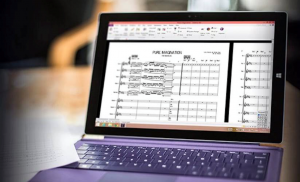
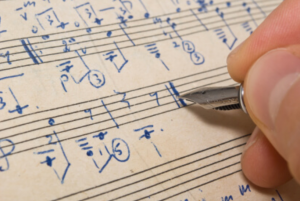
From pen to screen: how has technology changed the composition process?
With the explosion of technology and readily accessible media that has happened in more recent decades, there are more ways to be a composer than ever before – meaning the competition is much greater, but at the same time, so are the opportunities available. Now that we have composing software like Cubase and Logic, and sample libraries (that is, plugins of pre-recorded instruments that allow you to recreate a realistic orchestral sound from your computer), composing is no longer exclusively for those with formal musical education and the ability to read music, or a big budget to record live musicians in studios, and the lines between composer, orchestrator, sound designer and producer are becoming increasingly blurred.
In an age where anyone with a laptop can be a composer, how does this affect the opportunities open to us, and how do we take the step from composing for ourselves to making a living from it?
A little history
Going back through the centuries, many of the great Classical composers were financially able to compose the volume of work they did because of aristocratic patronage. Rich families would appoint composers to write music for private performance in their homes, providing them with a regular income and guaranteed performance opportunities, in return for entertainment and improvement of their own social standing and influence. This Classic FM article will introduce you to some of the major patrons through history. The process was similar for performers and writers; actors and musicians would be affiliated to specific families, and without patronage, we would not have the majority of Shakespeare’s work. Musicians have been making a more sustainable living from composing ever since copyright was introduced (in its earliest form in the late 18th century, and in its present since the early 20th). With rights and royalties, the great composers of previous eras would be earning a great deal more today than they would have done when they were alive.
The power of the internet
Fast-forward five-hundred years or so, and it’s a concept that’s still present today. Now that music is so widely accessible, the modern day “patron” is just a customer that downloads an album, goes to a gig or concert or buys sheet music. Websites like Patreon and Kickstarter allow freelancers invite their followers and fans to fund their work, providing exclusive and personalised content for those that subscribe. The internet is also a brilliant platform for performers to advertise their talents, as we have seen with the explosion of the “Youtuber” and Vine artists – for example, Justin Bieber, Carly Rae Jepsen, and Charlie Puth, who were all catapulted to stardom having been first spotted on their Youtube channels.
The same goes for composers. We can now market our work online with a website, and for all the Youtube videos, bloggers and adverts, there is music that get used in them, with many composers gaining a sizeable portion of their income from writing “library music”: individual tracks that could be used for all sorts of media, from adverts, corporate and educational videos to television and film. Library music companies will invite submissions from composers, where they will be professionally recorded and labelled for production companies to browse online, and composers are normally paid a one-off fee for the unlimited use of their music. One of the leading library music sites is Audio Network – take a look around the website to see the multitude of different styles that are available. Does it take the soul out of the process? Perhaps, but what it lacks in soul, it makes up for in flexibility, freedom and creative control, without the tight deadlines and clashing egos of film and television. Learn more from some composers who are making a living from library music here.
Film and television
Another strand of composing is for film and television, which has had a huge increase in popularity in recent years. It’s a career that relies almost entirely on building relationships with directors, writers and producers, and slowly working your way up. Film music has to fit a picture exactly, mirroring the movements onscreen, conveying emotion, and is very collaborative. It also involves working with directors who don’t necessarily know what they want, and requires such a broad knowledge and understanding of so many different genres of music that many people come to film composing later in their careers. While potentially hugely lucrative and undoubtedly one of the most exciting, rewarding composing careers, it is perhaps the most difficult one to break into.
Musical theatre
From the days of classical patronage to today, in order to earn a living as a composer our output is largely controlled by whoever is paying us – be this a patron, an advertising executive or a film director – but an area that allows more creative control than usual is musical theatre. Having monopolised the West End for decades, Andrew Lloyd Webber’s more recent original productions have been relative commercial flops (for example, the Phantom sequel Love Never Dies (2010), and the bizarre Stephen Ward (2013) that closed after three months), and he is now channelling his focus into helping the next generation of musical theatre writers and composers.

Love Never Dies – a musical failure? Or the catalyst for promoting young composers?
In 2017, he purchased the St James Theatre and renamed it The Other Palace, with the main purpose of bolstering new musicals, and they host regular open mic nights as well as workshops and showcases of new work. Off the back of this, composers can then earn money from licensing shows for amateur performance, or from a transfer of a show to a bigger theatre. Because the process from page to stage takes a great deal of time, other forms of income are still vital. Commercial song-writing allows this freedom to an extent, and there is a faster turnover of projects, but there is still the pressure from record labels to write hits that will sell and the competition is greater than for any other medium.
What can I do now?
As for where to get started while at school or university: GCSE and A Level Music courses will introduce you to the techniques used for composing and give you a chance to try it out, before specialising in university and postgraduate study, where you have the creative freedom to explore your own personal style without worrying about the mark schemes and hoop-jumping that comes with passing exams. You can also come along to our various composition clubs that take place during the week, where you have the freedom to work on your music. Early composition assignments can feel like creativity by numbers, but as they say, you have to learn the rules like a pro so you can break them like an artist…
It’s harder to get started making an income composing than in a lot of careers, but once established, there is essentially no cap on how far it is possible to go. It’s about finding your niche and a way of making it work for you, and new music (particularly by female composers) is being championed more now than ever. Here are some links specific to young female musicians:
Glyndebourne: Balancing the Score
If you think composing might be your thing then immerse yourself in learning more about your craft – go to gigs and concerts, see films in the cinema with the high-quality speakers and surround sound, explore both the West End and Off-West End theatre scenes (many shows have cheaper ticket lotteries or day tickets, and seats at the back for as little as £20). Seeing how others do it is the best way to learn how to do it yourself, and as Wimbledon residents with central London practically on our doorsteps, there really is no excuse not to! Most importantly, be brave and put your music out there so that people can see what you can do.
Happy writing!
Nanotechnology and its future in medicine – 07/09/18
Maya (Year 11), discusses the uses of nanotechnology in medicine, thinking about how far it has come and helped doctors. She also considers the dangerous aspects of using such small technology and the future benefits it may bring.
Technology in medicine has come far and with it the introduction of nanotechnology. Nanotechnology is the action of manipulating structures and properties at an atomic and molecular level as the technology is so small; it being one-billionth of a metre. This technology has many uses such as electronics, energy production and medicine and is useful in its diverse application. Nanotechnology is useful in medicine because of its size and how it interacts with biological molecules of the same proportion or larger. It is a valuable new tool that is being used for research and for combatting various diseases.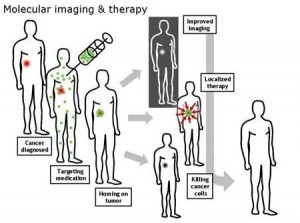
In medicine, nanotechnology is already being used in a wide variety of areas, the principle area being cancer treatment. In 2006 a report issued by NanoBiotech Pharma stated that developments related to nanotechnology would mostly be focused on cancer treatments. Thus, drugs such as Doxil, used to treat ovarian cancer will use nanotechnology to evade and surpass the possible effects of the immune system enabling drugs to be delivered to the disease-specific areas of the body. Nanotechnology is also helping in neuroscience where European researchers are currently using the technology to carry out electrical activity across dead brain tissue left behind by strokes and illnesses. The initial research was carried out to get a more in-depth analysis of the brain and to create more bio-compatible grids (a piece of technology that surgeons place in the brain to find where a seizure has taken place). Thus, it is more sophisticated than previous technologies which, when implanted, will not cause as much damage to existing brain tissue.
Beyond help in combatting cancer and research, nanotechnology is used in many areas in medicine from appetite control to medical tools, bone replacement and even hormone therapy. Nanotechnology is advancing all areas of medicine with Nano-sized particles enhancing new bone growth and additionally, there are even wound dressings that contain Nano-particles that allow for powerful microbial resistance. It is with these new developments that we are revolutionising the field of medicine, and with more advancements, we will be able to treat diseases as soon as they are detected.
Scientists are hoping that in the future nanotechnology can be used even further to stop chemotherapy altogether; fighting cancer by using gold and silica particles combined with nanotechnology to bind with the mutated cells in the body and then use infra-red lasers to heat up the gold particles and kill the tumour cells. This application would be beneficial as it would reduce the risk of surrounding cells being damaged as the laser would not affect them as much as the chemotherapy would.
In other areas, nanotechnology is further developing with diagnostics and medical data collection. This means that by using this technology, doctors would be able to look for the damaged genes that are associated with particular cancers and screen the tumour tissue faster and earlier than before. This process involves the Nano-scale devices being distributed through the body to detect chemical changes. There is also an external scan by use of quantum dots on the DNA of a patient which is then sequenced to check if they carry a particular debilitating genome, therefore providing a quicker and easier method for doctors to check in detail if a patient has contracted any illnesses or diseases. Furthermore, doctors will be able to gain a further in-depth analysis and understanding of the body by use of nanotechnology which surpasses the information found from x-rays and scans.
While this is a great start for nanotechnology, there is still little known about how some of the technology might affect the body. Insoluble nanotechnology for example, could have a high risk of building up in organs as they cannot diffuse into the bloodstream. Or as the nanoparticles are so small, there is no controlling where they could go, which might lead to Nano-particles entering cells and even their nuclei, which could be very dangerous for the patient. The science and technology committee from the House of Lords have reported concerns about nanotechnology on human health, stating that sufficient research has not been conducted on “understanding the behaviour and toxicology of nanomaterials” and it has not been given enough priority especially with the speed at which nanotechnology is being produced.
Nanotechnology is advancing medical treatment at a rapid rate, with new innovative technologies approved each year to help combat illnesses and diseases. Whilst more research needs to be conducted, the application of Nano-medicine will provide a platform of projected benefits that has potential to be valuable. Overall with the great burden that conditions like cancer, Alzheimer’s, HIV and cardiovascular diseases impose on the current healthcare systems, nano-technology will revolutionise healthcare with its advances techniques in the future as it progresses.
Glamour and Hedonism: Why the American Jazz Age Still Intrigues Us
Laura (Year 11) explores what makes the Jazz Age a significant time in America’s history and how it has been preserved through music and literature.
The American Jazz Age, or the “Roaring Twenties”, brings to mind many images of feathers, flapper dancers and flamboyance. As the 1920s were characterised by rapid stock market expansion, successful Americans spent more, and flaunted their wealth, throwing extravagant parties. Reminders of the era cannot be avoided, as it inspires fashion, films and music of today. F. Scott Fitzgerald’s 1925 novel The Great Gatsby captured the essence of the time and offers a paradigm of the jazz age. When Baz Luhrmann took on the challenge of adapting it for film, it made $353.6 million at the box office, as audiences were captivated by the romance of the period.
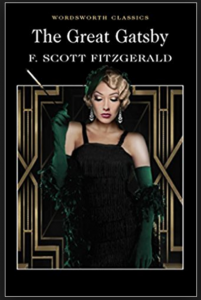
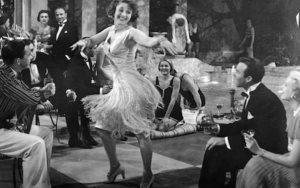
Whilst the 1920s saw people move away from the austere and unpromising life during the Great War, they also brought new changes and difficulties with them. This new America had lost faith in its organisation and structure, having become disillusioned by war and patriotism. The parties and indulgence reflected newfound individualism as traditional values were left behind. Many were critical of the more frivolous lifestyle in cities, as ideas of morality seemed to shift. Prohibition, the 1920 ban on alcohol, seemed to only encourage more drinking in the clandestine speakeasies, and organised crime and bribery were rife. But the era was also characterised by modernisation and greater liberation, especially for women. The 19th Amendment was changed in 1920, giving women the vote, and social changes followed as women in the workplace became more of a norm and gender roles were questioned. Even fashion became more liberating as short skirts and hair became popular.
The jazz music that fuelled the parties of the rich and powerful in 1920s America first came from the African-American communities of New Orleans and had its origins in blues. With a more free, improvisational style, it broke musical norms whilst social conventions were being dismantled in America. With better recording of music during the mid-1920s, this new style spread quickly, and radio broadcasting allowed more rapid popularisation of the genre, as it reached people of all ages and classes. Although the US was still a place of deep-rooted racism and xenophobia, and many conservatives feared the influence of “the devil’s music”, jazz’s popularity was a step towards better inclusion in American society. When Luhrmann made his adaptation of The Great Gatsby, the music was a key element of the film. Modern hip hop and traditional jazz were both a part of the soundtrack. It cleverly blended music that evoked the era with new music that allows the modern audience to experience what it was like to listen to something completely new and unheard. Luhrmann said that “the energy of jazz is caught in the energy of hip-hop”. Check out the Jazz Spotify playlist on the Music Department Spotify here.
Ernest Hemingway, Gertrude Stein and F. Scott Fitzgerald are among the authors that have helped to preserve the excitement and intensity of the Jazz Age in their writing and are part of the “Lost Generation” writers, who came of age during the Great War. Main themes in their writing included the opulence and wealth of the 1920s, but also the damaging effects of hedonism and disillusionment. Idealised versions of the past are often seen in writing of the era, reflecting on how the indulgence and enjoyment was overwhelming and even put individuals out of touch with reality. Fitzgerald describes one of Jay Gatsby’s parties:
“The lights grow brighter as the earth lurches away from the sun, and now the orchestra is playing yellow cocktail music, and the opera of voices pitches a key higher. Laughter is easier minute by minute, spilled with prodigality, tipped out at a cheerful word.”
The giddy description shows an uncomfortable confusion of the senses, as the narrator, Nick Carraway, discovers the exciting city life. However, Fitzgerald also reveals a world damaged by war, as the “valley of ashes” in the novel represents the effects of industrialisation and modernisation on the less wealthy, and the social inequality of the time. Carraway, having served in the First World War, notes that Jordan Baker had an “erect carriage which she accentuated by throwing her body backward at the shoulders like a young cadet”, his vision is clouded by experiences of war. The literature of the jazz age endures because it shows not only the glamour and thrill of the period, but also offers sobering reflections on the price of the new lifestyle.
The sparks of wealth and excitement of the Roaring Twenties were stamped on by the Wall Street Crash of October 1929 and were extinguished abruptly. As the terrible poverty of the Great Depression began, Fitzgerald wrote “Echoes of the Jazz Age”, recalling the earlier, more prosperous times.
“It bore him up, flattered him and gave him more money than he had dreamed of, simply for telling people that he felt as they did, that something had to be done with all the nervous energy stored up and unexpended in the War.”
It is no surprise that the Jazz Age has aged so well. The excitement and romance of the period has captivated readers and audiences, and this formative period of American history is not forgotten.
Kagan structures: creating an engaging environment to promote effective learning
Beth Ashton, teacher of Year 5 and 6 English in WHS Junior School, investigates Kagan structures and how this methodology helps to create an engaging classroom atmosphere focused on promoting effective learning.
“When teachers use Kagan structures they dramatically increase both the amount of active engagement and the equality of active engagement among students.”
Kagan, S. Structures Optimize Engagement. San Clemente, CA: Kagan Publishing. Kagan Online Magazine, Spring/Summer 2005

There is no doubt that creating a climate of active learning in the classroom contributes directly to the success and lasting impact on children’s development educationally.
As children progress through the key stages, the curriculum shifts in balance from skills to a more content-based approach. This can result in diminishing opportunities for lessons to be delivered with practical content. As a result, ensuring an active learning climate can be challenging.
Passive learning places focus on the teacher to dictate the learning environment, acting as the locus of control and knowledge within the classroom. Research has demonstrated that this approach results in poor knowledge retention and lasting issues for students in terms of taking ownership over their learning.

In terms of personal growth and the development of a lasting relationship with learning, this can result in pupils lacking the autonomy and independence to sustain their own studies.
With a whole-class ‘hands-up’ approach, pupils’ perception of their own ability can also be damaged.
“If the teacher has students raise their hands and calls on the students one at a time, students learn to compete for teacher’s attention. They are happy if a classmate misses, because it increases their own opportunity to receive recognition and approval”
Kagan, S. Kagan Structures for Emotional Intelligence
However, when time is of the essence and teachers are required to deliver a dense and complex curriculum, finding practical solutions to avoiding passive learning and ensuring active engagement in lessons can be difficult.
“The first critical question we ask is if the task we have set before our students results in a positive correlation among outcomes. Does the success of one benefit others?”
Kagan, S. Structures Optimize Engagement. San Clemente, CA: Kagan Publishing. Kagan Online Magazine, Spring/Summer 2005
In order to combat passive learning in the classroom, Years 5 and 6 in WHS Juniors have been using Kagan interactive learning structures in English lessons to promote inclusive and engaged dialogue when engaging with texts. Over the course of the year, girls have demonstrated an improved ability to move between social groups easily within lessons. Focussing on social awareness and the ability to converse with their peer group effectively has meant that teachers have been able to reward a multitude of different skills, rather than just praising those girls who put their hand up.
Kagan is a system of cooperative learning structures, based on using peer support to engage pupils. Using a series of variety of different interactive structures, pupils are placed in mixed ability groups of four. Constructing these groups with an awareness of social dynamics and learning styles is vitally important.

Kagan structures require every student to participate frequently and approximately equally https://www.kaganonline.com/about_us.php
By encouraging students to work as a team, teachers are able to remove the elements of competition and insecurity within the classroom, replacing them with a culture of collaboration and mutual support. The ‘hands-up’, whole-class approach to lessons is removed and replaced with pupils learning and discussing questions as a group, and feeding back to other groups around the classroom. This is achieved by swapping different numbers and using strategies such as ‘round robin’ and ‘numbered heads together’.
For example, when analysing a poem in English, girls would work in mixed ability groups, trying to identify the use of symbolism and looking at its effect. After thinking time, each number would be given an allocated time to share their thinking. This could be organised with the most able student sharing last, so that they don’t automatically lead the conversation. In order to ensure the lower ability pupil remains engaged, they could be pre-warned that their number would be responsible for reporting the outcome of the group discussion to the rest of the class.
The round robin structure described above ensures that each pupil:
- has a role
- is given allocated and structured time to share their views
- is listened to by their peers
Importantly, the conversation is not dominated by one particular student. The option to opt out is also managed effectively by the teacher, by ensuring that pupils are aware of the high expectations around their engagement and contribution to class discussion.
“Group work usually produces very unequal participation and often does not include individual accountability, a dimension proven to be essential for producing consistent achievement gains for all students.”
Kagan, S. Structures Optimize Engagement. San Clemente, CA: Kagan Publishing. Kagan Online Magazine, Spring/Summer 2005
By using the Kagan interactive models, unstructured group discussions are removed from the classroom environment. Strategies such as ‘Timed Pair Share’ give discussion a scaffold. This means that pupils who usually demonstrate a dominant approach and tend to speak first, are able to develop the capacity to listen. Equally, students who tend to take a back-seat are guided through the process of sharing their thinking more readily.

The teacher is also able to allocate roles within groups with ease and adaptability according to the pupil’s number within the group. This ensures that dominant pupils are not able to control team discussions and feedback time, and less engaged pupils are drawn into participation through interaction with peers.
“If students in small groups discuss a topic with no ‘interaction rules’, in an unstructured way, often one or two students dominate the interaction. If, however, students are told they must take turns as they speak, more equal participation is ensured”
Kagan, S. A Brief History of Kagan structures.
As well as academic participation, Kagan can be a vital tool in improving social awareness and skills. The format of structured discussion time within class, results in clear social strategies being delivered to pupils through lesson content. Providing discussion in class with a framework also increases confidence and promotes risk-taking. These skills translate to the playground and, ultimately, the students’ life outside school and into the world of work.
Research shows that there is a strong correlation between social interaction and exchange of information. Generally, higher achieving students tend to form sub-groups within a cohort, creating enclaves where information is rapidly exchanged, and excluding those students they perceive as ‘lower ability’. This can result in those students who struggle feeling isolated and excluded, and ultimately disengaging from their studies. By using Kagan to scaffold and structure the sharing of information between children of different abilities, we can ensure that pupils of all abilities are gaining access to the social interactions which will ensure they make excellent progress.
A whole-class approach to questioning is proven to disengage a significant proportion of the class, whilst placing strain on the teacher. By passing ownership of the lesson to the students, through posing questions and allowing them to answer collaboratively, the teacher is able to take a step back and observe the learning process, taking feedback from each child through listening to their discussion.
By providing the teacher with the time and mental space to observe the lesson as it progresses, changes are able to be made over the course of the lesson, adapting to pupils needs. By using Kagan structures when tackling new learning, students are guided through the stages of learning through peer support. In the first stage of learning, pupils are able to work as a larger group, obtaining a significant amount of team support. Following this, pupils are then able to take on the problem in pairs, and finally, individually.
Using this format provides the more able pupils with the challenge of articulating their thinking to support their peers and provides those with barriers to learning with support of multiple different kinds within a lesson. Using established interactive structures means that the structures themselves are transferable across subjects, allowing them to be applied to all lessons. Having a readily available, student-led body of cooperative learning strategies embedded in the curriculum means that differentiation through discussion and peer support avoids a system of creating worksheets and allows pupils to ensure they are constantly being challenged, stretched and supported.
Follow @Juniors_WHS on Twitter




